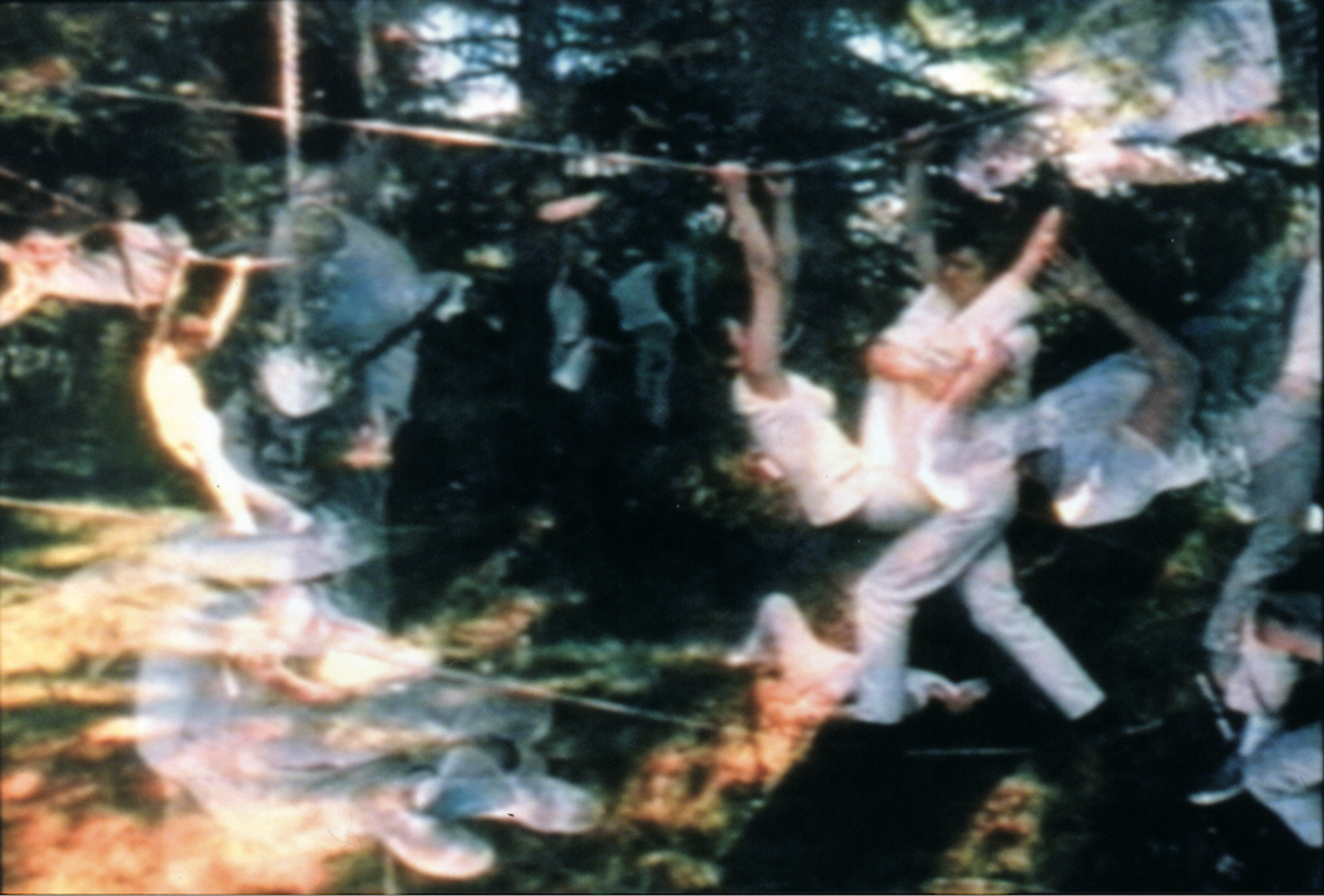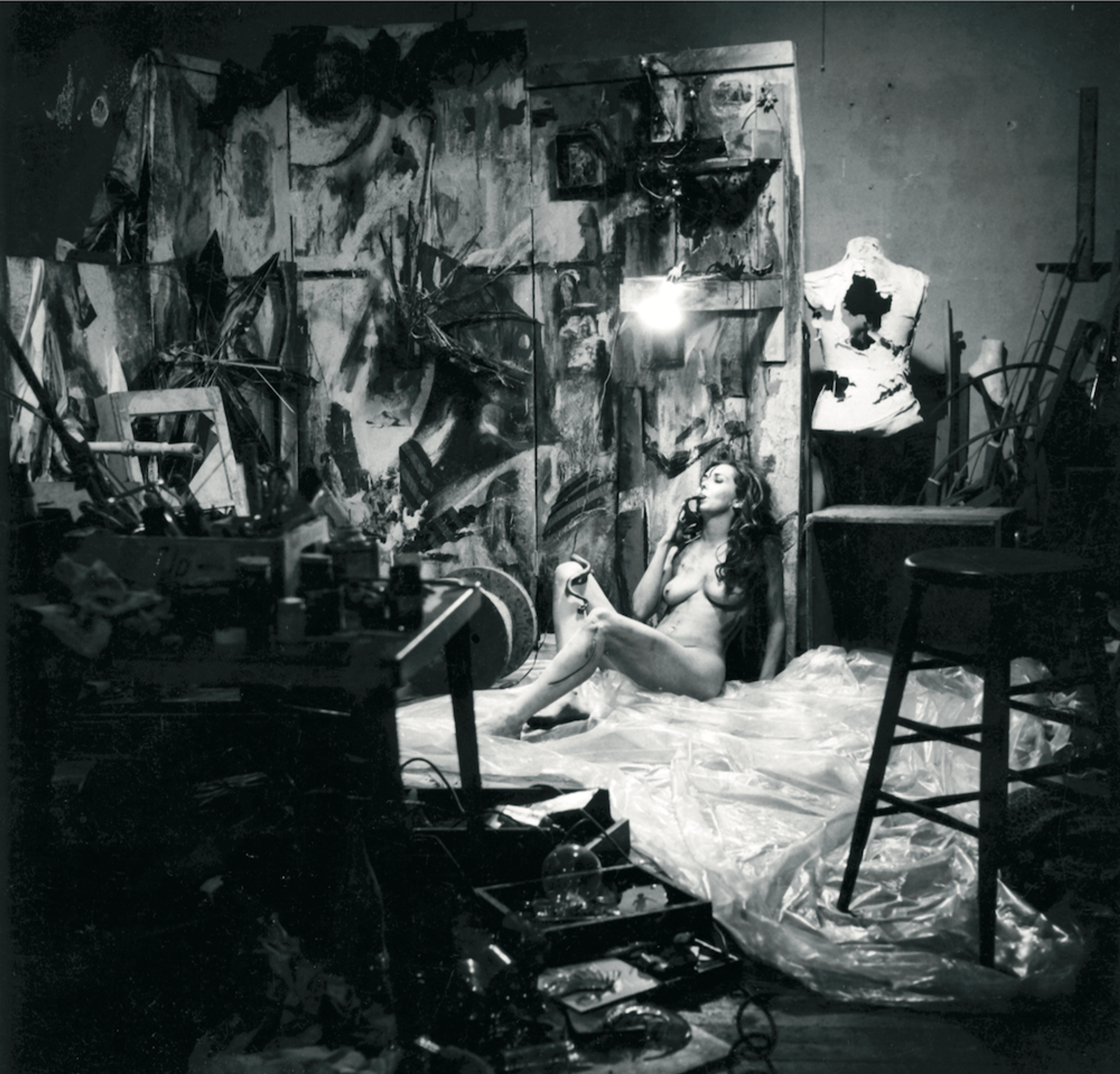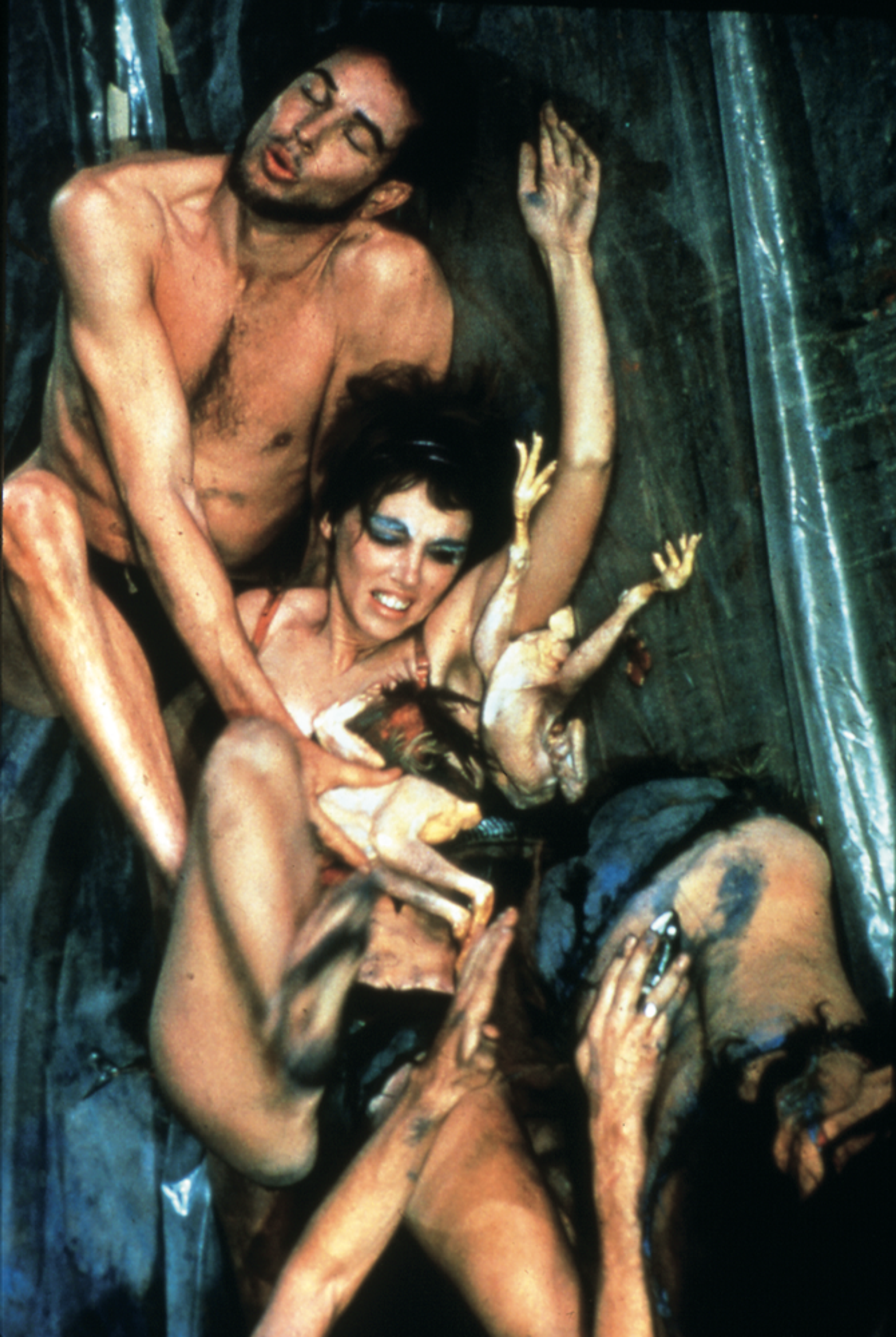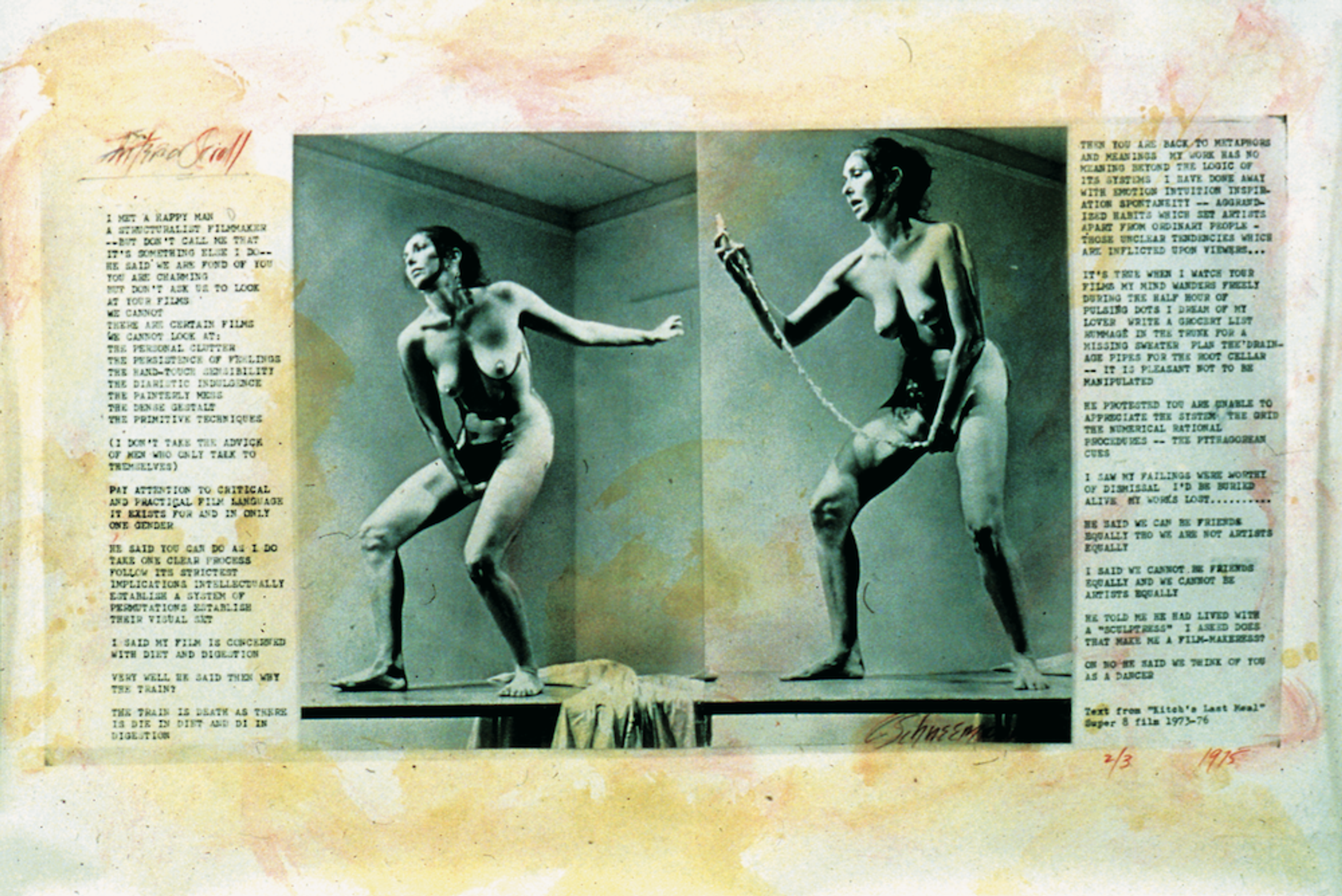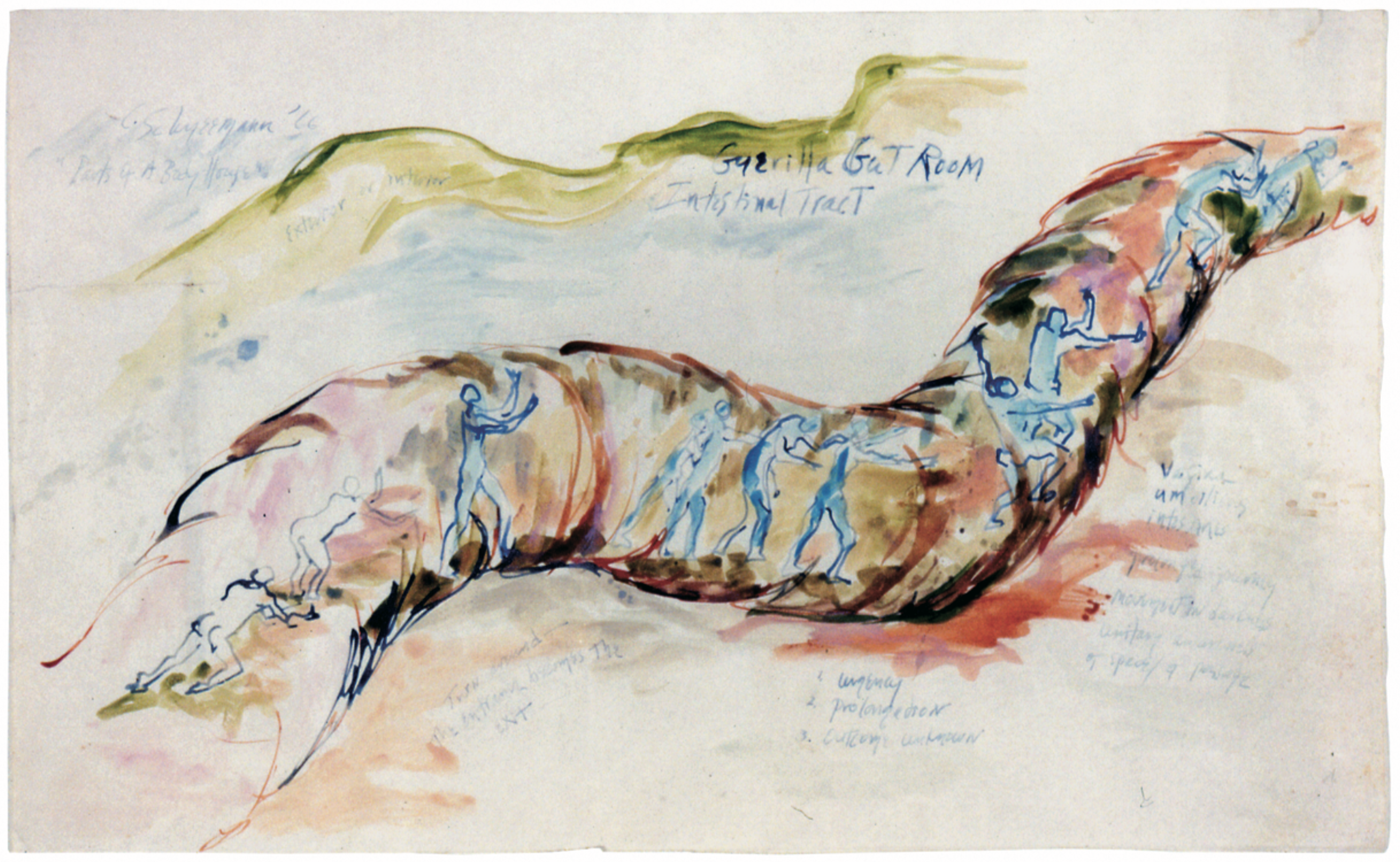Even if Carolee Schneemann’s work seems to concentrate on her own female body, its use as an artistic material is only one possible variable for making life itself a potentially unadulterated material for art. When in 1965 Schneemann said, “All things this generation has individually discovered, defined, hewn, structured as unique, personal, will become a spectrum of interchangeable elements, freely available and subject to new uses and certain commonplace understandings,” she was not only addressing the social transformations in the 1960s and 1970s that first made the expansion of the concept of art possible, but also the idea that life could be freely shaped by art; the notion of reaching through new art forms like happenings or performances an intensification and redefinition of life. As Allan Kaprow asked a few years earlier: “Why should an artist not begin a happening that stretches over several days, months, or years, and constantly slips in and out of the everyday life of the actors?” – the utopia being dissolving art in life. Nonetheless, Scheeman always saw herself as a painter, her environments, happenings, or later mixed media installations as a spatial, temporal, and material expansion of painting that already imply gesture, action, duration, dimension-in-action. Her notion of the image is that of an image in movement, an inexorable, unpredictable process where chance, the unforeseen, plays an essential role alongside personal experience and the political context.
A talk between Hans Ulrich Obrist and Carolee Schneemann in June 2006.
Hans Ulrich Obrist: Let’s talk about one of your newer works, Devour .
Carolee Schneemann: Yes, it’s a multi-channel video that is designed to be a large installation. It’s a work about menace in which I juxtapose three seconds of life that’s not in evident threat with three seconds of war disasters from material that was sent to me from Sarajevo. It’s from a collective that tried to gather what was happening there. There is a direct relationship to the issue of free speech, actually.Yes. And images from Guantanamo Prison, from Haiti, from Palestine. So it’s a work that disturbs and questions the tenor of normality. Since my US social structure is always advancing by the destruction of other countries, I have this habit of investigating the countries that we seem intent on de-stabilising and destroying.
Yesterday you were in a conference that was very much about that direct political implication, which has a lot to do with censorship, and that is something I am very interested in, in terms of your very radical practice: to what extent have you faced censorship?
Were any of your unrealised projects censored or forbidden? There has been such a sporadic and constant history of censorship around the work that I can’t even remember all of the instances of it. I have an almost blind intelligence about the degree of reaction that the work might produce. I always begin with the sense that I am doing what’s obvious and good nurture for the culture, that they need to see this. And then when they react with outrage and horror and want to suppress the work I am always shocked. I think keeping this naïve aspect enables me to keep concentrating on what I feel I need to bring forward. So yes, of course there are many works I have not been able to do because the censorship comes in an indirect way – by not having support, not having help, not getting grants, not having technical access.
Carolee Schneemann Water Light/Water Needle Lake Mahwah (1966)
Could you give one or two examples of your unrealised projects that were too utopian or too big to be realised but are particularly dear to you?
The Body House , an installation of sculpture genitals. It’s very delicious and funny; it’s a huge installation. It’s a house of sculptured genitals that are motorised. It’s a wall of body parts and they are all explicitly erotic and they have motorised elements, so there are breasts that turn back and forth, there are penises that go up and down; it’s very funny and it’s activated by sensors as viewers walk through the space.
Considering your famous Eye Body performance, that’s almost like the body becoming space, so is it like Eye Body becoming a house?
Yes, yes, but it’s all sculptures and not explicitly my presence or my body in it, and then more recent technological works which are interactive.
There was no depiction of female sexuality that I had ever seen that corresponded to my sense of my own lived sexuality
Another question in relation to that is that of the body, the way you use the body in a collage-like way. I interviewed Otto Muehl many times and I’ve always been very interested in this almost parallel way you developed your work and Vienna Actionism developed at almost at the same time, so it’s almost like a coincidence without knowing about each other. I was wondering about your relation to Vienna Actionism.
That’s nice. Yes. It resembles an ontology, right? It’s very interesting because I didn’t know about them until, probably 1964, 1965, so there was already Eye Body and Meat Joy . So when we met they called me their little Meat Sister, “Oh, you’re the little sister from America”, and we’ve always been very sweet together, except for Otto trying to break into my room in Asolo (at Francesco Conz’ art mansion). Where Otto would break into any female’s room he could, and I had to drag a huge oaken trunk in front of my door. We have always shared that odd assertion of aggressively bringing the body forward as primary material!
Carolee Schneemann Mortal Coils (1994-95)
So that’s something parallel.
It’s an amazing point and it’s also amazing that our obsessions and principles have remained active in art historical culture because that might not have happened, it could have all disappeared. When I first did Eye Body all the curators said, “This is shit”.
You didn’t know about Vienna Actionism because they were very clandestine in Vienna.
They were.
And you never heard of them, so what were your inspirations? Can you tell me how Eye Body came about because for me it was almost like a sudden eruption, suddenly it was there. Whistler says, “Art happens”, so I was wondering if there was anything that triggered it. It is an invention. Recently when I interviewed Albert Hofman about the moment he invented LSD, about when he had the inspiration. I am always interested in that moment in which the invention happens. What inspired you to make Eye Body ?
OK. Well, there are several layers to it. One, I am a painter so it was a principle of extending dimensional aspects of abstract expressionism into the works I was doing at the time, and those works were large painting constructions with motorised elements. So the imagery started in a bunch of drawings when I was half awake, so I had these drawings, these synergetic little dream drawings where I was seeing the body mixed as a collage.
Some of the impulse behind it was wanting to situate my body with the question that I asked at the time: could I be both image and imagemaker? Some of the motivation was that there was no pronoun that was inclusive of the feminine. Everything around me was masculinised, so I was already, in this highly sexualised body, marginalized and excluded. The Pop artists were obsessed with the female body and it was a very mechanistic, cold, mechanical form of depiction, and that art historically there was always the nude and I supported myself as an artist’s model while these terrible paintings were made of me as subject. That was a disturbing way to make a living but that is one of the things we all did. So there was the exclusion by language and then there was the exclusion by sexuality. There was no depiction of female sexuality that I had ever seen that corresponded to my sense of my own lived sexuality. People were always showing me pornography and it had nothing to do with my sense of body. So that would be a motive that also goes into my film Fuses . The other thing that encouraged me was Erro, my painter friend from Paris. He had no aspect of misogyny or exclusionary aesthetics. His wife was a painter. We went back and forth to each other’s studios in New York when he was there and I told him about this imagery I had and he said, “Well I’ll shoot it for you. Let’s do it”. So Eye Body , the whole thing happened in about two and a half hours; it’s very fast.
Carolee Schneemann Eye Body: 36 Transformative Actions (1963)
Was it improvised?
Yes, it was improvised within the materials and I made one change, one physical change, for each shot of the camera. So I was kind of entranced; I was in another place because I trusted him and he gave me complete encouragement. So those are some of the strands.
When I saw your retrospective at the New Museum (1997), the show Dan Cameron curated, I had the feeling that one of the main strengths of your drawing was that it is almost like a red thread running through your work; Eye Body emerged from drawing and then drawing returns. I was wondering if you could talk say something about drawing.
Yes, that’s wonderful. I am so happy for that question. Yes, drawing is exactly as you say, the thread, because my work comes out of optical concentration. I started off as a landscape painter; Cézanne is my huge influence and it was Cézanne’s broken line where I saw the plane begin to break, as I have written, that’s where I can see the body can enter. Drawing is the translation between dream and waking, between form and hand, between what’s imagined and what can be planned or roughly depicted. It’s always a failure; I don’t do drawings to succeed at anything but there are clues, the notations. I am sure you can say more about what drawing is.
Carolee Schneemann Meat Joy (1964)
Is it a daily practice?
No, but weekly. (Laughs) As often as I can. Is it like pause sessions? Lawrence Weiner told me that he can only draw once or twice a week, but he has to put himself into this trance. Yes, that’s right, that’s right. It’s always uncertain and I feel like I am plunging into failure or old habits, so the imagery that happens to be here combines this struggle to release myself from my hand and to be able to reposition it, so I am working with found images from newspapers, computer generating and permutating them, and then super-imposing them with landscape paintings that I do outside by my pond. There is still that transaction between nature and technology. It’s very stressful but then when it works I feel OK, although I am always sensing that the art world will condemn the nature aspect. (Laughs)
One of the things that happens actually with the Interior Scroll piece is that while in the earlier piece you suddenly bring the body into drawing, here you bring drawing into the body. Can you talk a little bit about that almost reverted/inverted principle? It is again the red thread of drawing.
It is the red thread. The original drawing of Interior Scroll was made with a red pen. On waking, this image was residual from a dream. It is a very crude, simple, little red drawing of a figure lifting her leg and pulling a scroll out of her vagina and the note from the dream said, “interior knowledge”, which I wrote on the page and then I forgot about it and let it go. But once it seemed as if that image had to be physicalised, brought into live action, then it was of course all about the broken line and pulling the line of text from the other mouth, as if the umbilicus had become this thread, this line, and pulling it into actual space as writing a scroll. So I thought a lot about the line and how it also relates to Up To And Including Her Limits , where I am just suspended on the rope, which is a sort of line that gives me a way of drawing in space that is unpredictable. I am not saying this very clearly, but you are onto some important thread for the work and there are all these links. And also Mortal Coils , the more recent death piece where the rope line is now vertical and in motion. But that also comes from Water Light /Water Needle (1965) where the ropes are horizontal and the bodies move across them.
Carolee Schneemann Interior Scroll (1975)
The way you use ropes is very different from Duchamp. I interviewed Leonora Carrington last month and Leonora told me about it; she helped Duchamp install the ropes for the Surrealist exhibition. But the way you use ropes, it is not as an exhibition design, with you it has more to do with the body.
It does have more to do with the body. It’s as if it’s another venous system; as if it’s veins being pulled out of an interiority and they are carrying the energy of the body into the space, vertical, horizontal, coiled, and I think about line like that, how to physicalise that the gesture of line becomes the hand and how to transmute that. So it’s not my hand any more, but it’s the impulse of the hand, something like that.
I’m addressing issues in the culture with the feeling that the public will always be on my side
This leads to another question, the question of the spectator. Duchamp said that the spectator does fifty per cent of the work. I was wondering how you would see the role of the spectator. Obviously your work has very often been seen as putting the spectator in an unusual position,maybe the idea also of attacking the spectator. Handke wrote this piece called Offending the Audience , his famous play from the 1960s, at more or less at the same time, a bit after you had done your actions. I was wondering, as we had quite a few of those iconoclastic, public insults, you know, the Vienna Actionists’ early performances which ended with police also, in some kind of way, offended the public. It is a complex question about you and the public.
Consciously, I never think of the public because they interfere with my thinking about the work. Unconsciously, I’m addressing issues in the culture with the feeling that the public will always be on my side. My innate sense is always that they are going to recognise something, even though the history contradicts this. The history has always been about resistance, denial, calling me a pornographer, or not really an artist, or not engaged properly with my materials. I am also very positive and responsive to the photographer when the flash bulbs go off; I feel that is communication with me. I always want the spectators as close as possible. I want to feel an edge of their energy and when that energy is negative it’s very intense and quite horrifying. That has happened sometimes in performance. So in a way it’s like creating a gift for anonymous people or people that have to come and inhabit their own existence. I never feel that I am being aggressive towards them or insulting them, although they often react as if I have.
Carolee Schneemann Parts of a Body House – Guerilla Gut Room (1966)
Just one last question. What would be your sentence, what would be the future?
I am very dark about the future. I see nature being devoured and I am desperately looking for a word which doesn’t exist, which has to do with constructed megaliths, monoliths, that wherever I travel to now for my work I am surrounded by thousands upon thousands upon thousands of illuminated windows in huge high-rise structures blocking the sky, blocking the water, blocking the earth, in which thousands upon thousands of people go about their ordinary lives.
Your definition of the future, then, what would it be in one sentence?
Menace. The future is ...Menace.
Carolee Schneemann (1939-2019)



